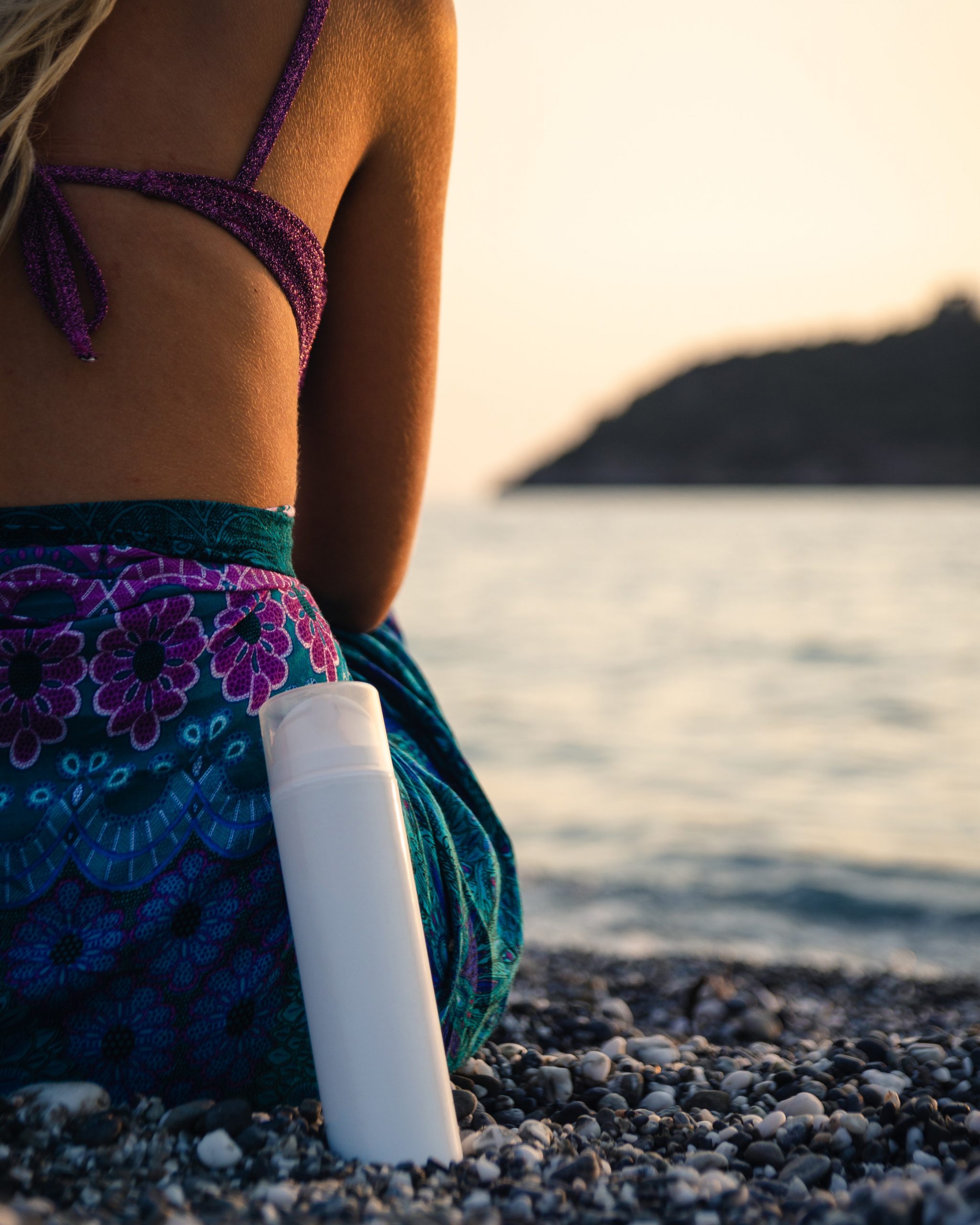As the warm weather rolls around, many of us are reaching for that long-forgotten sunscreen we tucked away at the end of last summer. We all know the importance of wearing sunscreen during a trip to the beach, but most of us aren’t as vigilant as we need to be when it comes to sunscreen.
Suncare faux-pas are rampant, and skincare misinformation abounds. It’s essential to know what to look for in sunscreen and how to use it to protect ourselves from skin cancer and sun damage; that’s why we’re here to help.
Does Sunscreen Expire?
Sunscreen absolutely expires, and you’ll find an expiry date located on the bottle. In general, sunscreen is made to last for three years. However, other factors can lead to a faster breakdown in sunscreen’s chemical makeup. Storing sunscreen in a hot or damp place can lead to chemical breakdown and a build-up of bacteria.
Sunscreen should never be used past its expiration date, as the ingredients weaken over time. Using an expired sunscreen can lead to sunburns, brown spots, and an increased risk of developing skin cancers.
In addition to weakened protective properties, expired sunscreens undergo changes in consistency, meaning your sunscreen may not feel as comfortable on the skin as it once did. Similarly, it may not spread as easily, which can lead to patchy applications.
Never use a sunscreen that has changed color or developed an odor. An off scent is a sign of bacterial contamination, which can lead to skin irritation and breakouts.
Take the word expired at face value. You wouldn’t drink expired milk, and you should exercise the same caution with your sunscreen.
How Much Should I Use?
One critical error people make when applying sunscreen is not using enough. Sunscreen amount varies from person to person, as our bodies are not all one size. When applying sunscreen to the face only, you’ll need about half a teaspoon to a full teaspoon to get a significant layer of protection. It may seem like a lot but using any less can lower the sunscreen’s efficacy and leave your skin exposed.
If you’re applying to the face and body, use no less than one ounce, about the size of a shot glass. When using an aerosol sunscreen, apply enough until an even layer is visible on the skin, then rub in.
Not using enough sunscreen can lead to burns and skin damage, rendering the sunscreen completely useless, not to mention squandering your hard-earned dollars. Remember that when it comes to sunscreen, less is not more.
How Often & When to Reapply Sunscreen
Another misstep people tend to make is not reapplying sunscreen enough or at all. When exposed to UVA and UVB rays, sunscreen breaks down in about two hours. If you’re heading for a long day at the beach, you’ll want to pack your sunscreen so you can reapply.
Ideally, you should apply sunscreen 15 to 30 minutes before heading outside and every two hours as needed. Be sure to cover oft-neglected areas like the hands, ears, and feet.
Note that reapplication is typically only necessary while outdoors or in direct sunlight. If you are inside or seeking shade outside, your sunscreen will not break down as quickly.
Reapplication may sound bothersome, but sunscreens have come a long way in recent years. From aerosol sprays to powdered SPFs, all sorts of sunscreens are available to make it easy and comfortable to reapply sunscreen throughout the day.

How Important Is SPF?
Most of us are guilty of tucking our sunscreens away at the end of summer, forgetting them until sunnier days return. But this habit may be doing more harm than good. Although sunscreens can last several years, using a sunscreen that’s lasted you for years may signal a breach of a golden skincare rule: sunscreen should be worn year-round.
SPF is our best line of defense against skin cancers and signs of aging. Therefore, you should work it into your daily skincare routine year-round. It may seem superfluous, but the sun’s rays can cause skin damage on the cloudiest of days, even if it’s not visible to the naked eye.
Things to Look Out For
For the most part, any sunscreen is better than no sunscreen, but all sunscreens are not alike. While choosing a sunscreen that works for you largely depends on personal preference, you should be vigilant when shopping for sunscreen and consider the following.
- SPF Level. Look for an SPF of at least 30. You can go higher, but it’s not always necessary.
- Maximum protection. Look for broad-spectrum SPF. The sun emits several types of rays, and you’ll want to protect your skin against all of them.
- Chemical or physical. This decision primarily comes down to personal preference. Both are effective, but physical mineral sunscreens are more natural. However, they are more difficult to rub in and may leave a white cast on darker skin tones.
- Water-resistance. While it may not always be necessary, water-resistant sunscreen is excellent for swimming or exercising outdoors.
Whichever sunscreen you choose, remember to wear it year-round to minimize the risks of sun damage and skin cancers.

